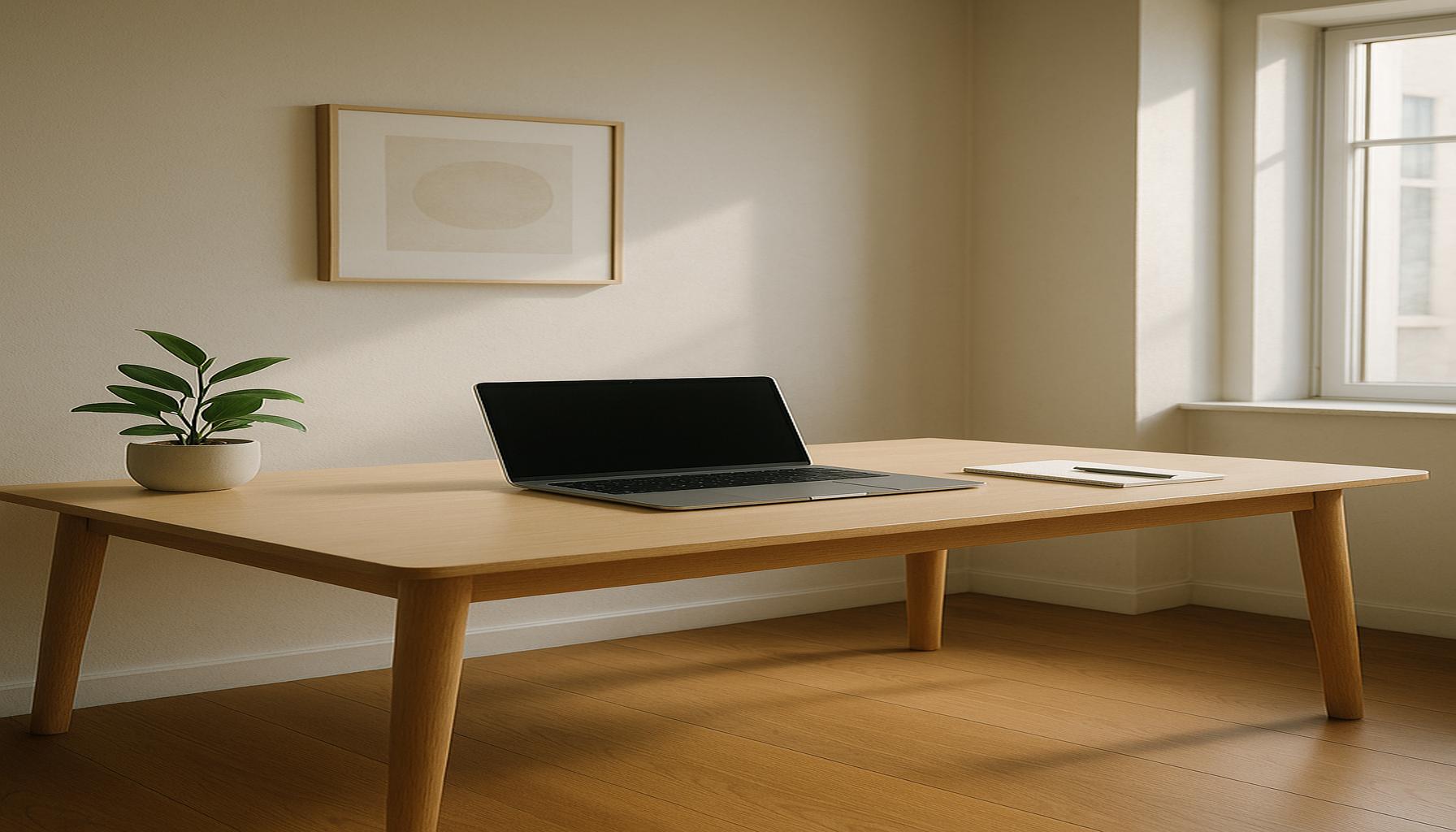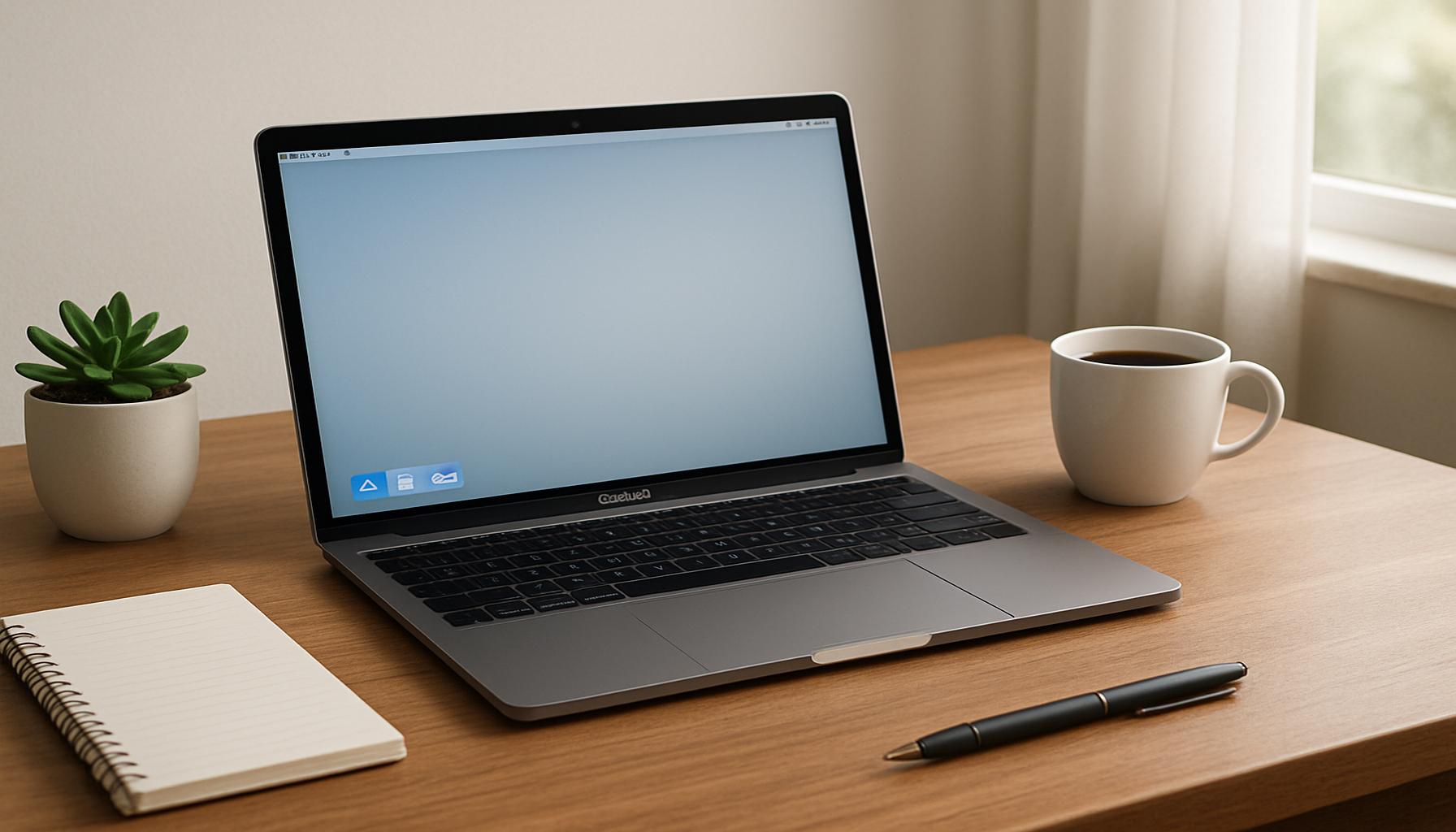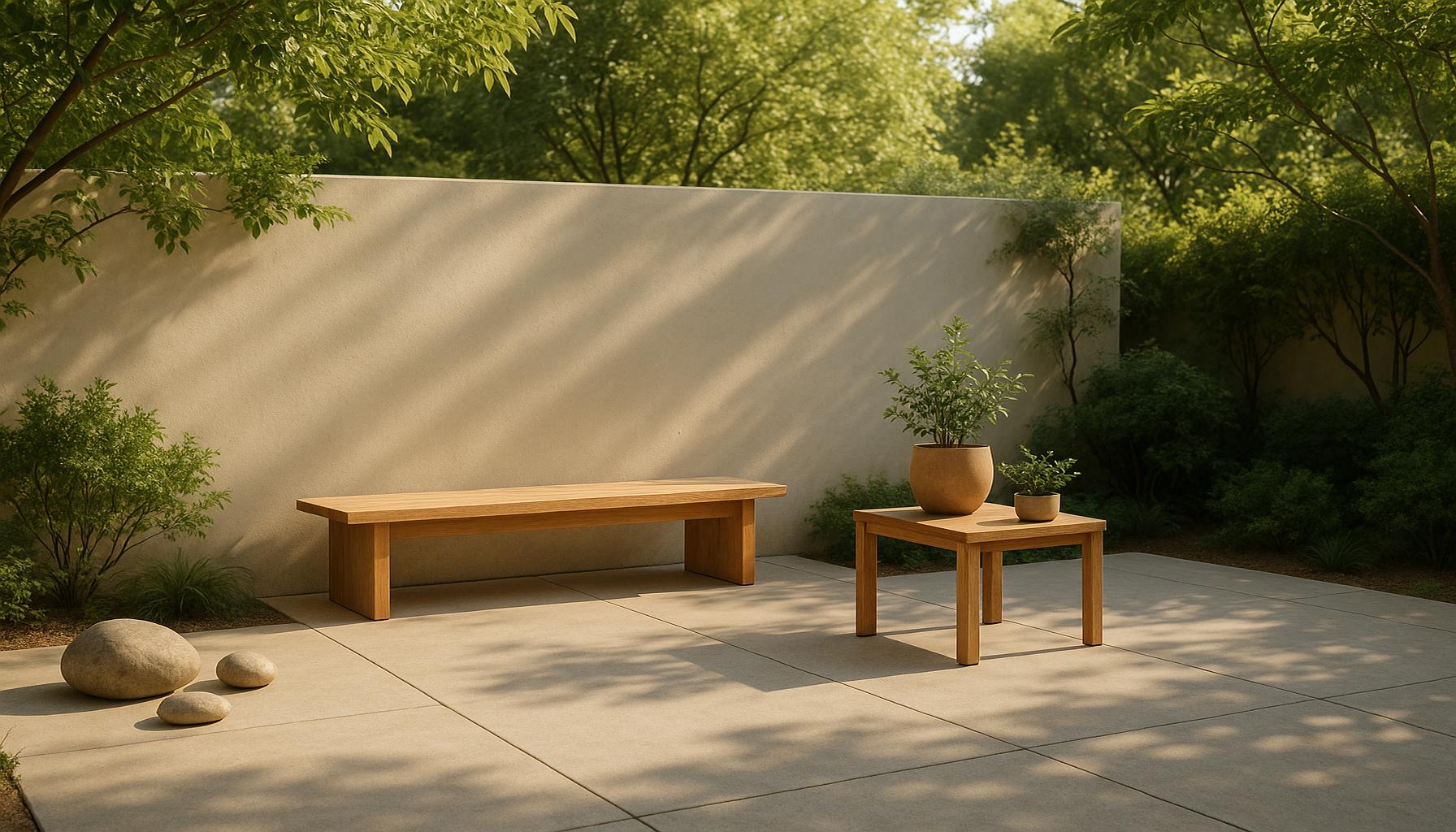Minimalist Study Spaces: Strategies for Creating Environments that Facilitate Learning and Concentration
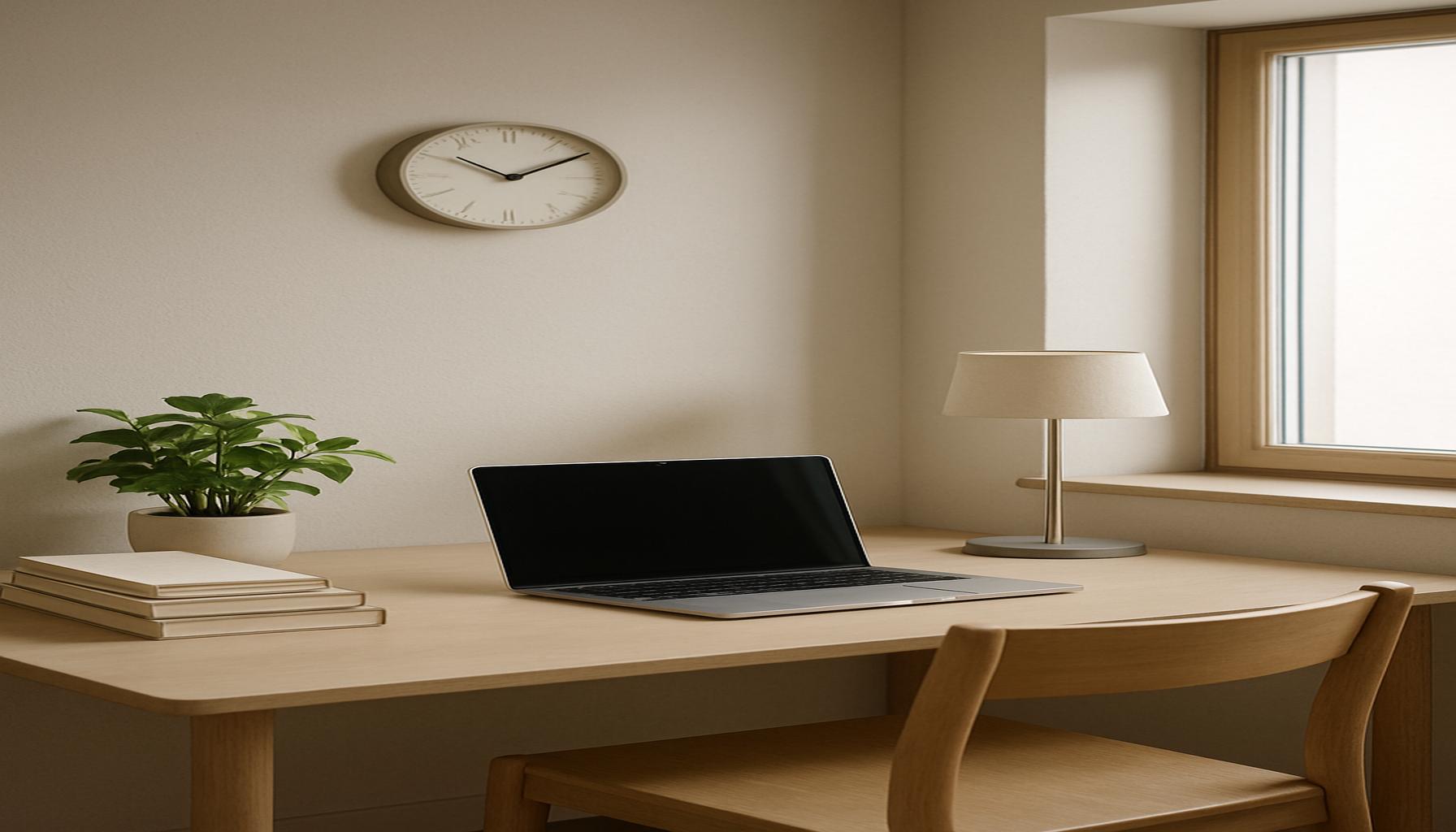
Creating the Perfect Study Environment
In today’s fast-paced world, distractions seem to lurk around every corner. From the incessant ping of smartphone notifications to the alluring scroll of social media feeds, maintaining focus on studying can often feel like an uphill battle. Enter the concept of minimalist study spaces—a solution designed not just for aesthetic appeal but as a strategic method to enhance productivity and concentration.
Minimalism extends beyond being just a design trend; it encompasses a philosophy that promotes simplicity. This approach can work wonders when it comes to creating an efficient study environment. By stripping away unnecessary items and distractions, you can:
- Reduce cognitive overload: A cluttered environment can overwhelm the mind, making it difficult to focus. By minimizing visual noise, you can clear mental pathways for better concentration.
- Enhance concentration: With fewer distractions around, you’re more likely to maintain your focus on the task at hand. This can lead to deeper engagement in your studies.
- Create a sense of calm: A tidy, organized space can evoke feelings of tranquility, allowing for a more enjoyable study experience.
To design your own minimalist study space, consider these essential components:
- Decluttered surfaces: Only keep items that are absolutely necessary within reach. This may mean removing excess decorations, random papers, or anything that diverts attention from your studies.
- Natural lighting: Leverage windows and quality lamps to maximize brightness. Studies indicate that natural light can boost mood and productivity while reducing fatigue.
- Functional furniture: Invest in a comfortable chair that supports good posture and an ergonomic desk that allows you to work at an ideal height. These elements not only promote better health but also enhance focus.
These guiding principles not only create a peaceful atmosphere but also facilitate greater creativity and effectiveness in learning. Research has shown that a clean, organized environment can lead to significant improvements in focus and information retention, which are crucial for academic success.
As we delve into strategies for creating minimalist study spaces, this exploration reveals how even small changes can foster significant improvements in your study habits and concentration abilities. It’s exciting to think about how refining your study environment can transform the entire learning experience. Let’s dive deeper into the practical steps to cultivate a workspace that is not only functional but also inspiring!
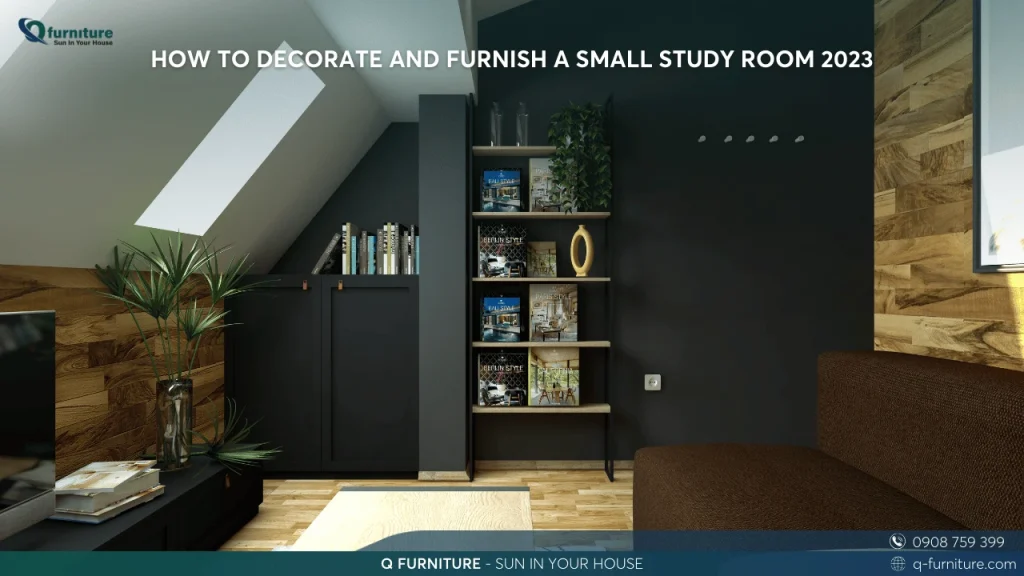
LEARN MORE: Click here to boost your productivity
Strategies for Designing Your Minimalist Study Space
As you embark on the journey to create a minimalist study space, the first step is to adopt a mindset that embraces simplicity and intentionality. This intentional approach can not only clear your desk but also declutter your mind, fostering an environment where learning and concentration can thrive. Here are several strategies that will guide you in crafting a study space that enhances your focus and productivity.
1. Embrace Functionality Over Decoration
While aesthetics play a role in how we feel about our spaces, they should not mislead us into filling our desks with vibrant decorations or large pieces of furniture. Aim for a study space that focuses on functionality. Ask yourself which items are essential for your study routine. Key pieces should include:
- A solid desk: Choose a desk that fits your space and provides ample room for your books, laptop, and study materials.
- An ergonomic chair: A chair not only supports good posture but also helps you stay comfortable during study sessions.
- Minimal tech accessories: Keep only the technology that is necessary, such as a laptop, quality headphones, or a planner. This eliminates the temptation to engage with distracting devices.
2. Design a Dedicated Study Zone
Having a specific area for studying signals to your brain that it’s time to focus. This can be a corner of a room, a dedicated office, or even a small nook. Wherever it is, ensure the space is exclusively reserved for study and related activities. This also helps to create a psychological association with learning. When you enter this designated zone, allow yourself to enter a mindset prepared for productivity.
3. Control Your Environment’s Ambiance
The right ambiance can profoundly influence your ability to concentrate. Here are some considerations:
- Lighting: In addition to natural light, consider using adjustable desk lamps with warm, focused light. This can reduce eye strain and help you stay alert.
- Color Scheme: Opt for a calming color palette; soft blues or greens can minimize stress and enhance focus. Avoid overly bright or energizing colors that may create distraction.
- Sound Management: If you’re easily distracted by background noise, think about noise-canceling headphones or soft instrumental music that encourages concentration.
By carefully considering these aspects of your minimalist study space, you pave the way for improved focus, reduced stress, and enhanced creativity. The physical environment of your study area sets the stage for your mental performance, making it crucial to prioritize simplicity and functionality as you create a sanctuary for learning.
| Category | Description |
|---|---|
| Clutter-Free Zones | A minimalist study space prioritizes organization, reducing distractions that can hinder focus. |
| Natural Elements | Incorporating plants and natural light can enhance mood and stimulate productivity, creating a more engaging learning environment. |
| Functional Furniture | Utilizing furniture that is both stylish and serves a purpose allows for a more efficient space. |
| Mindful Color Schemes | Choosing calming colors can minimize stress levels and promote concentration. |
The composition of your study environment plays a crucial role in your learning process. By implementing strategies that emphasize minimalism, you create a sanctuary that encourages productivity and enhances concentration. Think about how the absence of clutter can streamline your focus; each item in your space should serve a purpose. Moreover, the introduction of natural light and greenery not only adds aesthetic value but also offers psychological benefits that fuel your academic endeavors.Functional furniture helps to optimize the space efficiently, ensuring comfort without sacrificing style. Furthermore, the importance of mindful color choices cannot be overstated; calming palettes aid in reducing anxiety and stress, thereby fostering an atmosphere conducive to deep learning. These strategic enhancements transform not just the physical atmosphere but also your mental approach to study. Embrace these principles for an effective, minimalist study space that truly supports your learning journey.
DIVE DEEPER: Click here to discover minimalist organization strategies
Maximizing Your Minimalist Study Space
Once you’ve embraced the principles of functionality, dedication, and the right ambiance, it’s time to focus on maximizing productivity within your minimalist study space. This involves not only what you include in your environment but also how you arrange and utilize the tools you have. The following strategies will help you optimize your study experience while maintaining the minimalist ethos.
4. Utilize Vertical Space
In a minimalist study space, every inch counts. Instead of sprawling outwards, consider going vertical. Utilizing wall-mounted shelves or pegboards can provide ample storage without cluttering your desk. For instance, a simple set of floating shelves can store essential books and supplies while keeping the floor clear, contributing to a more open and airy environment. This approach minimizes distractions and helps you focus on what’s important.
5. Adopt the ‘One In, One Out’ Rule
Maintaining a minimalist study space requires an ongoing commitment to simplicity. The ‘One In, One Out’ policy is an effective strategy where each time you introduce a new item into your study environment, you remove one. This practice not only prevents clutter but also encourages intentionality with your belongings. For example, if you purchase a new textbook, consider donating an old one you no longer need. This way, you always have a streamlined space dedicated to the most pertinent materials.
6. Implement a Routine for Clarity
Creating clear boundaries within your study habits is essential for effective learning. Implementing a routine not only conditions your mind for focus but also helps you maximize the potential of your minimalist study space. Short, structured study sessions interspersed with breaks, such as the Pomodoro technique, can enhance concentration and reduce mental fatigue. Coupling your study scheduling with a dedicated space can optimize productivity and turn your study time into a productive ritual.
7. Limit Your Distractions Through Technology Management
In today’s digital age, technology can be both a tool and a distraction. To create a truly minimalistic study environment, consider how you manage your devices. Use apps or browser extensions that block distracting websites during study sessions. Additionally, keep your phone in another room or use ‘Do Not Disturb’ modes to avoid interruptions. Ensuring that technology serves your educational goals rather than hindering them is crucial to maintaining focus.
8. Personalize with Purpose
Although a minimalist space prioritizes simplicity, it doesn’t mean your study area has to feel impersonal. Personal touches that inspire and motivate you, such as a single framed photo, a motivational quote, or a small plant, can enhance the ambiance without overwhelming the space. Choose one or two items that resonate with you and help cultivate an encouraging environment. These personalized aspects can serve as reminders of your goals and aspirations, further enhancing your concentration.
Through these strategies, you can maximize your minimalist study space, ensuring it continues to support your educational endeavors. Remember, the essence of a minimalist study environment is to create a space that fosters clarity, focus, and an unwavering commitment to learning. By strategically organizing, managing distractions, and personalizing intentionally, you are not only crafting an efficient study haven but also paving the way for academic success.
DISCOVER MORE: Click here to boost your productivity
Conclusion: Embracing Minimalism for Enhanced Learning
In today’s fast-paced and distraction-laden world, creating a minimalist study space emerges as a beacon for effective learning and concentration. By prioritizing functionality, implementing strategic organization, and fostering an inviting atmosphere, students and professionals alike can cultivate an environment that not only enhances productivity but also promotes mental clarity. The strategies discussed, from utilizing vertical space to the ‘One In, One Out’ rule, are tools that help maintain focus while minimizing clutter.
Moreover, establishing clear routines and managing technology effectively plays a crucial role in maintaining concentration, vital for anyone striving for academic success. The integration of personalized touches can further transform a sterile environment into a motivational haven, reminding individuals of their goals and aspirations without overwhelming the space.
Moving forward, consider how these principles of minimalism can be incorporated into your own study routine. Reflect on the tools and decor that genuinely support your learning journey, while being open to continuous refinement of your space. By embracing a minimalist approach, you’re not just creating a physical space for studying; you are laying the groundwork for a productive mindset, unlocking the potential for academic excellence.
Explore further the world of minimalist study spaces to discover how simplicity can yield profound results in your educational pursuits. As you embark on this journey, remember that the true power of minimalism lies in making thoughtful choices that align with your unique learning style.
